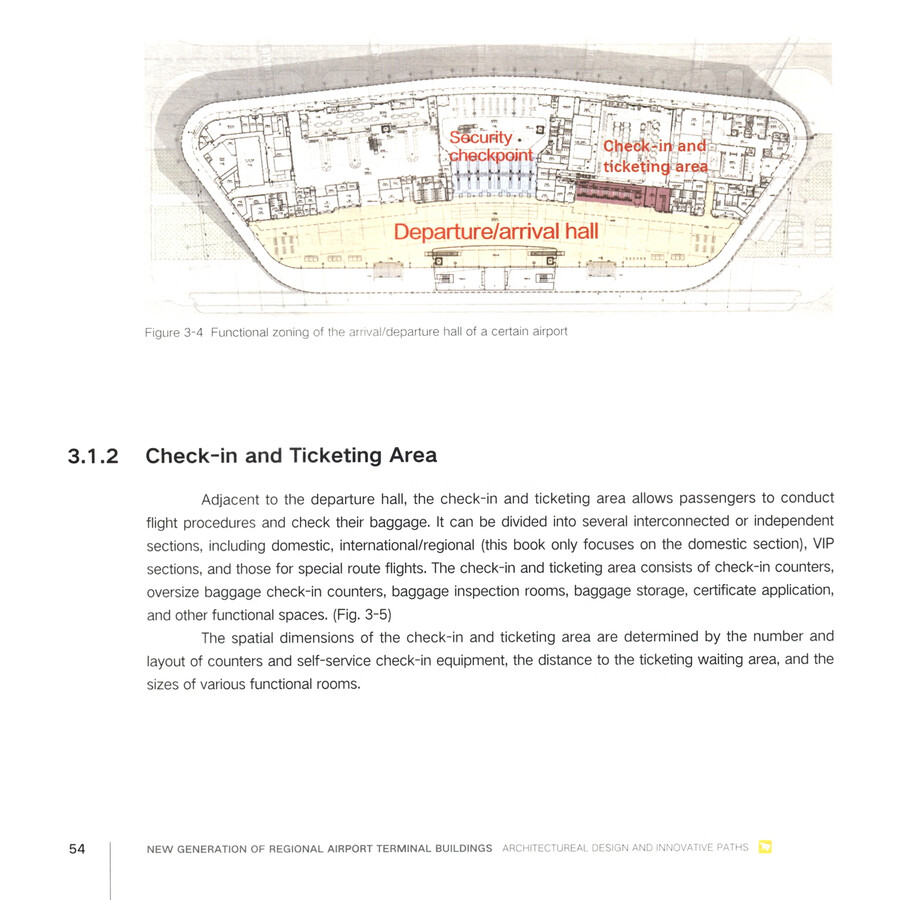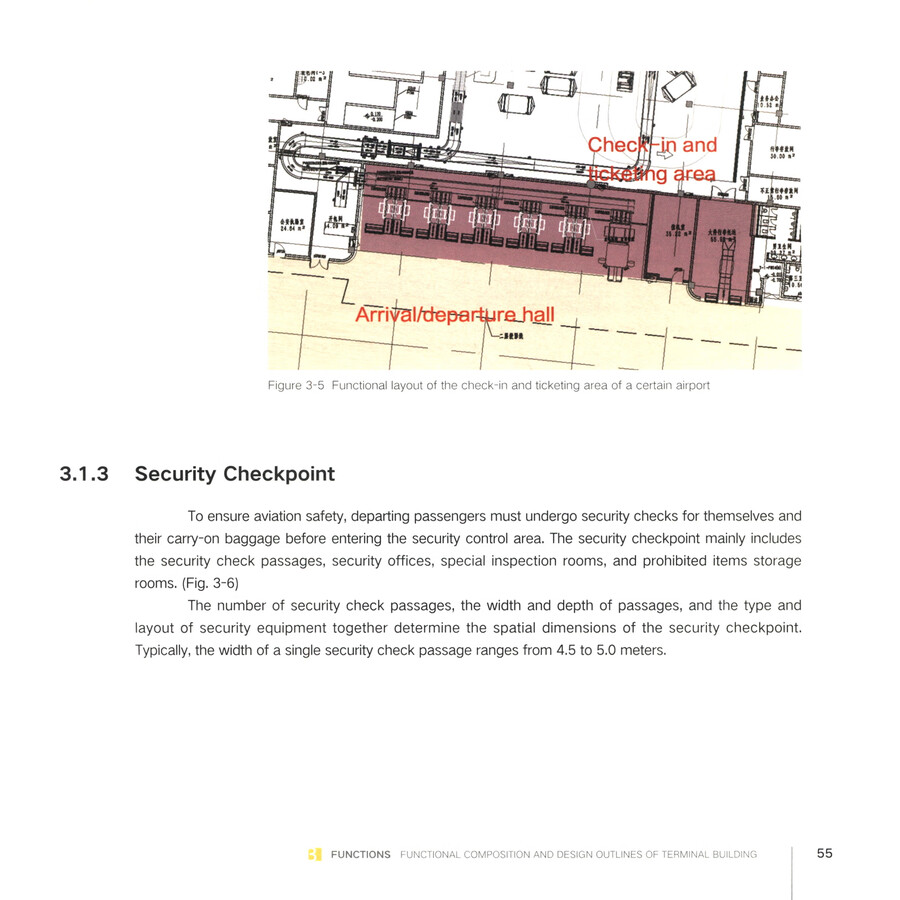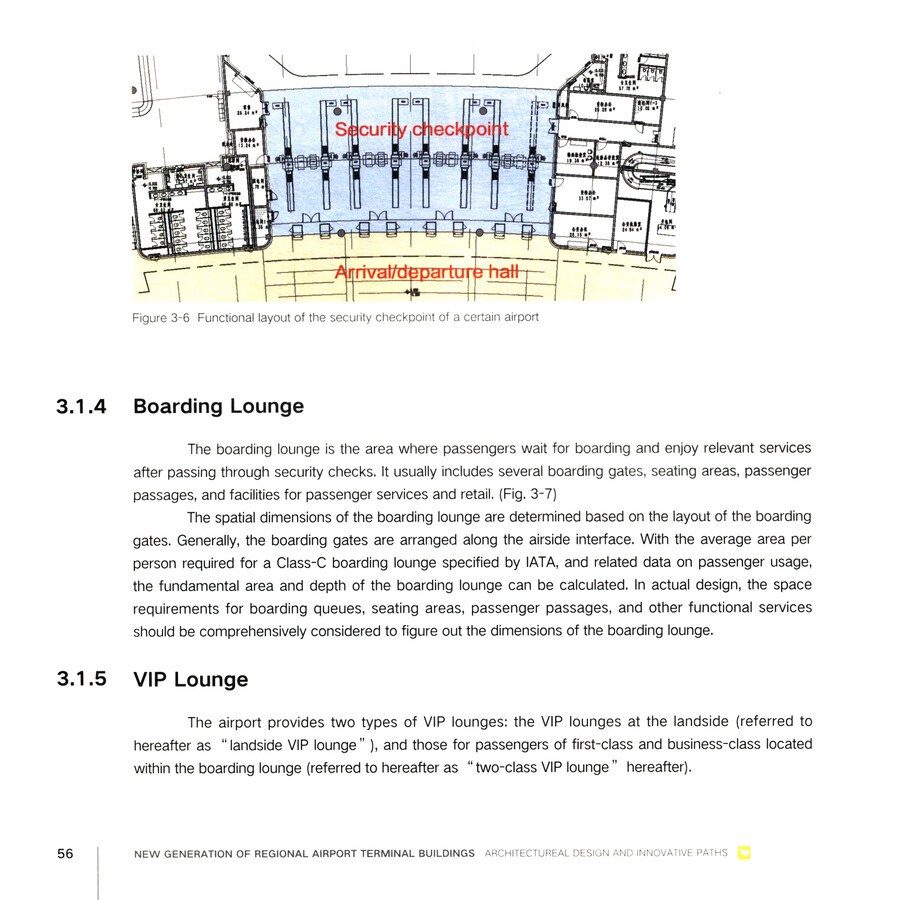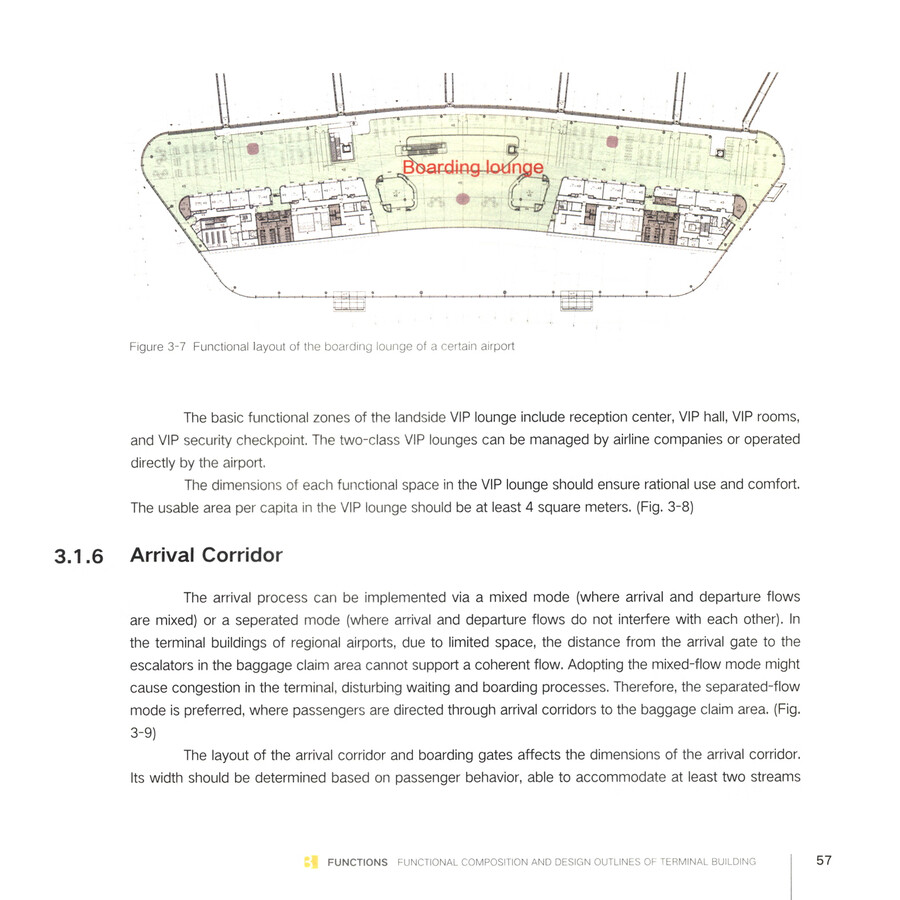Details
This book focuses on small-and medium-sized regional airport terminals, and is divided into seven chapters: Chapter 1 "Introduction" puts forward the classification of airport system, the definition of regional airports, and the types of regional airport terminals in China; Chapter 2 "Planning" provides an overview of airport layout, as well as the basics of flight area and terminal area including terminal building configuration, boarding bridges, landside transportation organization, and parking lot and holding area design; Chapter 3 "Functions" focuses on the functional composition of terminal building, passenger flows, and design outlines of the functional zones in terminal building, including the entrance, departure/arrival hall, check-in and ticketing area, security check-point/joint inspection area, boarding lounge, boarding gate, baggage claim hall, baggage handling area, VIP lounge, etc.; Chapter 4 "Spatial Composition" focuses on the one-and-a-half-story terminal, discussing several types of spatial combination and their spatial scale; Chapter 5 "Innovation" explains the problems of China's regional airport terminal design, puts forward the necessity of design innovation, and studies 31 excellent cases of regional airport terminal in China and other countries, summarizing innovative design approaches in terms of external form, internal experience, and detailed construction; Chapter 6 "Tendency" divides the development of China s regional airports into four eras of function, style, culture, and experience, and puts forward the concept of the "new generation (for the Era of Experience) of terminal building design," and further elaborates in detail how to design such terminal buildings based on practice of several Chinese regional airports participated by the author's team; Chapter 7 "Summary" presents innovative concepts and methods of terminal design for regional airports in the "Era of Experience," as well as five dimensions for evaluating the innovativeness of terminal design.
About the Author
Guo Wei(郭炜),Graduating from the School of Architecture of Xi'an University of Architecture and Technology in 1998, Guo Wei is the General Manager and General Architect of the Southwest Division of ECADI of Arcplus Group PLC, as well as a member of the Technial Committee of Arcplus Group PLC. He is a National Class 1 Registered Architect and National Registered Planner. He is an expert of Chongqing Municipal Planning Committee and Professional Committee of Chongqing Municipal Planning and Natural Resources Bureau, a special expert of Chongqing Municipal Housing and Urban-Rural Development Committee, vice president of Chongqing Survey and Designing Association, and a corporate mentor of Chongqing University Industry-University-Research Base,
Guo Wei has participated in design and construction of Shanghai Pudong International Airport Terminals 1 and 2, Shanghai Hongqiao Comprehensive Transportation Hub, the Corporate Aircraft Base of Shanghai Hongqiao International Airport, Rizhao Shanzhihe Airport, Xizang Dingri Airport, Bengbu Airport of Anhui Province, Terminal 2 of Lancang Jingmai Airport, Terminal 2 of Canyuan Washan Airport, Terminal 3 of Changsha Huanghua International Airport, Zhanjiang Airport of Guangdong Province, Terminal 3 of Dali Airport, Jining Airport, Terminal 3 of Henan Huangchuan Airport, etc.
Table of Contents
FOPEWORD
PREFACE
1 INTROOUCTION
1.1 Scope and Definition of Regional Airport
1.2 Fundamental Study of One-and-a-Half-Story Terminal Building of Regional Airport
1.3 Significance of Design Research on Regional Airport Terminal Building
2 PLANNING
General Composition and Basic Elements of Regional Airport
2.1 Spatial Composition of Airport
2.2 Basic Introduction to Airfield Area
2.3 Basic Introduction to Terminal Area
3 FUNCTIONS
Functional Composition and Design Outlines of Terminal Building
3.1 Functional Areas of Terminal and Passenger Flows
3.2 Design Outlines of Arrival/Departure Area
3.3 Design Outlines of Check-in and Ticketing Area
3.4 Design Outlines of Security Checkpoint/Joint Inspection Area
3.5 Design Outlines of Boarding Lounge
3.6 Design Outlines of Boarding Gate
3.7 Design Outlines of Baggage Claim Hall
3.8 Design Outlines of Baggage Handling Area
3.9 Design Outlines of VIP Lounge
4 SPATIAL COMPOSITION
Spatial Composition of One-and-a-Half-Story Terminal Building
4.1 Types of Spatial Combination of One-and-a-Half-Story Terminal Building
4.2 Spatial Scale Study of One-and-a-Half-Story Terminal
5 INNOVATION
Design Innovation of Regional Airport Terminal Building
5.1 Problems in Design of Terminal Building
5.2 Innovative Methods and Excellent Cases of Terminal Building Design
6 TENDENCY
Four Generations of Regional Airport Terminal and Innovative Practices of the Fourth Generation (Era of Experience)
6.1 Four Generations of Regional Airport Terminal Design
6.2 Innovative Design Practices of the Fourth-Generation Regional Airport Terminal
7 SUMMARY
Innovative Concepts and Evaluation of the Fourth-Generation (Era of Experience) Regional Airport Terminal
7.1 Concepts and Methods for Innovative Design of the Fourth-Generation Regional Airport Terminal
7.2 Evaluation Aspects and Methods for Design of the Fourth-Generation Regional Airport Terminal
ILLUSTRATION SOURCES
POSTSCRIPT



